|
“Walking with the Comrades” is an engrossing account of the under currents of social, political and economic direction of India. Arundhati Roy’s unassuming question sums up the book, “Can you leave the water in the rivers? The trees in the forest? Can you leave the bauxite in the mountain?”
The book questions the accepted ideas of what constitutes progress, development and indeed civilization itself. It condemns both the Indian State and the Maoists for their war over power, land, ideology, mineral riches, rights and ecology. Contrary to popular belief about A Roy’s inclinations, the militant behavior of the Maoists has no sympathy or support in the book. She expresses clear skepticism whether these Naxalites would do anything different if in power than those currently in power. She draws a picture for us to understand the conundrum of the extreme circumstances under which these people live, the boundaries to which they are pushed, and why and how the resistance movements have come about. She aptly states, “If you pay attention to many of the struggles taking place in India, people are demanding no more than their constitutional rights”. Beneath the forests of India lies billions of dollars worth of minerals. Approximately 24 types of minerals including iron, bauxite, copper, chromium, gold, lead, manganese, zinc and coal, are found in nearly 50 percent of India’s total landmass of 3.20 million sq km. India’s considerable mineral resources are being coveted not just by the Indian industry, but increasingly by foreign capital. There is international demand for these natural resources and pressure on the Administration. Roy exposes the conflict of interest of various top level Politicians with the exponential growth in the mining industry. Fueled by the furious pace of development in foreign countries, the production of iron ore, bauxite, chromium, coal and natural gas has doubled and even tripled from mid-1990s to mid-2000 in India. But this huge spiraling production has contributed a measly 2.5% to the country’s GDP in the last ten years. In southern mineral-rich Karnataka state, for instance, royalties from mining have remained a static 0.7 to 0.8 percent of total revenues even while the value of these minerals have shot up manifold. Of 1.2 billion people in India, 700 million continue to live under $2 a day while 50 Indian billionaires top the Forbes wealthiest people charts. On one hand, we are the fastest growing nations, but on the other hand less than 6% employment comes from the industrialization, 40% of students drop out by secondary school, 230 million Indians are suffering from malnutrition and 6 lakh villages are in desperate poverty with access to limited or simply no water, electricity, hospitals, etc. According to the 2001 census, there are more than 90 million tribal people in India, with large concentrations in the eastern and central Indian states, such as Orissa, Madhya Pradesh, Chattisgarh and Jharkhand. The human development report of the eastern Orissa state, the country’s richest mineral-bearing State, is an abysmal low of 0.404. To make matters worse, almost all of these minerals are exported; thus not benefitting India even indirectly in terms of our own infrastructural growth. The gross ecological damage, health degradation, uncontrolled pollution and scale of social irresponsibility are horrendous. In the meanwhile, the industrialists across the globe are trading Futures in the stock market waiting on the secretly signed MoUs (Memorandum of Understanding) to materialize, over the dead bodies of the tribals & police. Here is a disarming account that I want to share from the book. The Maoists invite A.Roy to spend time with them. In order for them to recognize each other, she had to arrive at a given location with camera, tika and coconut and look for the person with a cap, Outlook magazine and bananas. Upon reaching the destination, she met a young boy with a cap, but he was carrying neither the magazine nor the bananas. He said, he couldn’t find the magazine and he ate the bananas since he got very hungry on the way. And from here she began her journey with the Naxalites whom the government portrays as the “Internal Security Threat” (an over simplified and exaggerated term for a very complex issue). In an earlier blog, I have captured some other excerpts from the book: http://ourglobaldiary.weebly.com/chandnis-blog/excerpts-walking-with-the-comrades-by-arundhati-roy She covers intriguing personal accounts of various tribal people, that was made possible only because she spent one on one time spent with them over several days by living, eating, and experiencing their way of life. Their life’s tragic stories start to feel like getting to know of the losses in a friend’s life. She exposes the human rights violation performed at catastrophic levels in the name of “Operation Green Hunt” by the State. It is typical of the Government to kill the key liaison for peace-talks between the Maoists and the State while holding make-believe peace talks. (Alongside the urban Indian asks rather naively, “but why don’t they hold peace talks”?) The oppressive government is becoming more and more hostile towards its own marginalized citizens that suffer poverty, illiteracy, malnutrition, and caste and gender discrimination. Legalizing of unfair practices via new laws and policies is brought to light. The Fifth Schedule of the Indian Constitution provides protection to the Adivasi (indigenous) people living in the Scheduled Areas. This constitutional right is under threat of being amended to effect transfer of tribal lands to non-tribals and corporate bodies. Since 2000, India has begun liberalizing the mining industry; there are laws and amendments being passed to even allow 100% Foreign Direct investment with almost no controls and nil accountability. India ranks among the five largest markets in the world for coal, steel and aluminum. But we fail to ask the critical question…at what cost? Committees set up by the Government acknowledged (but this information was intentionally dropped from the final released reports) that facts are being misrepresented for the purpose of forcibly acquiring land for private industry. The media is working hand in glove with the establishment, twisting and faking stories in favor of the powerful & the influential, eroding one’s belief in the daily news headlines.The author also covers women’s issues and rural health problems in the book. She has written at great length about the need for “personal integrity” in our leaders and decries the extent of killing of people in this internal combat. Reading this collection of essays requires one to keep an open mind to a different point of view. I really appreciate her voice and this book despite the highly acerbic remarks, especially in the last essay. After all, someone has to say it. It exposes us to other people’s reality. That someone can still write such essays reinforces that Indians continue to live in democracy and there is still hope. Arundhati Roy is a Booker Prize winner and has written a screenplay for a TV film that won 2 National awards. http://en.wikipedia.org/wiki/Arundhati_Roy This book has 3 essays all of which can also be read online: Mr. Chidambaram’s War – http://www.outlookindia.com/article.aspx?262519 Walking with the Comrades – http://www.outlookindia.com/article.aspx?264738 The Trickledown Revolution – http://www.outlookindia.com/article.aspx?267040
0 Comments
The Introduction of the book ‘Walking with the Comrades’ is so compelling that I wanted to share a snippet of it here: 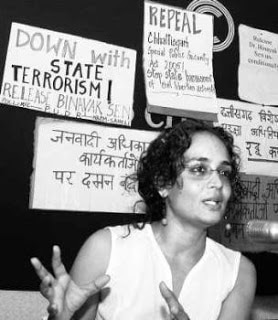 “The Minister says that for India’s sake, people should leave their villages and move to the cities. He’s a harvard man. He wants speed. And the numbers. Five hundred million migrants, he thinks, would make a good business model. Not everybody likes the idea of their cities filling up with the poor. A judge in Mumbai called the slum dwellers pickpockets of urban land. Another said, while ordering the bulldozing of unauthorized colonies that people who couldn’t afford it shouldn’t live in cities. When those who had been evicted went back to where they came from, they found their villages had disappeared under great dams and quarries. Their homes were occupied by hunger and policemen. Their forests were filling up with armed guerillas. War had migrated too. From the edges of India, in Kashmir, Manipur, Nagaland, to its heart. So the people returned to the crowded city streets and pavements. They crammed into the hovels on dusty construction sites, wondering which corner of this huge country was meant for them.” Another excerpt from the first page of the first chapter of the book “Chidambaram’s War” – “The low flat topped hills of south Orissa have been the home to the Dongria Kondh long before there was a country called India or a state called Orissa. The hills watched over the Kondh. The Kondh watched over the hills and worshipped them as living deities. Now these hills have been sold for the Bauxite they contain. For the Kondh it’s as though god has been sold. They ask how much god would go for if the god were Ram or Allah or Jesus Christ. Perhaps the Kondh are supposed to be grateful that their Niyamgiri hill, home to their Niyam Raja, God of Universal Law, has been sold to a company with a name like Vedanta (the branch of Hindu philosophy that teaches the Ultimate Nature of Knowledge). It’s one of the biggest mining corporation in the world and is owned by Anil Agarwal, the Indian billionaire who lives in London in a mansion that once belonged to the Shah of Iran. Vedanta is only one of the many multinational corporations closing in on Orissa. If the flat topped hills are destroyed, the forests that clothe them will be destroyed too. So will the rivers and streams that flow out of them and irrigate the plains below. So will the Dongria Kondh. So will the hundreds of thousands of tribal people who live in the forested heart of India, whose homeland is similarly under attack. In our smoky crowded cities, some people say, “So what? Someone has to pay the price of progress.’ Some even say, ‘Lets face it, these are people whose time has come. Look at any developed country. Europe, the United States, Australia – they all have a ‘past’. Indeed they do. So why shouldn’t “we”? -Arundhati Roy Appeal to save Soni SoriUpdate on 4/28/2012: Various Non Profits & Human Rights Organizations are running campaigns to save Soni. Over last few months, I have taken the issue of Soni Sori torture to my heart. Please see the bottom of this blog to see what you can do to save her. UPDATE on May 2nd, 2012: http://iadhri.wordpress.com/2012/05/02/supreme-court-directs-chhattisgarh-government-to-bring-soni-sori-to-aiims-for-treatment/ See bottom of this page for information on this topic from Dec 2011. Tehelka is running a campaign to save Soni Sori since atleast last month: http://www.tehelka.com/story_main52.asp?filename=Ws030412spLanding.asp and http://www.tehelka.com/story_main52.asp?filename=Ne140412Arrest.asp For the uninitiated: Soni Sori is an Adivasi school teacher from Dantewada who was arrested on Oct 4, 2011. The charges against her are possibly completely false. Anyhow, since then she has been brutally tortured and sexually abused while in police custody in Chhattisgarh. Despite doctors from NRS Medical Hospital having confirmed that stones had been inserted into her vagina and rectum, Soni Sori has received no proper medical attention. She has been passing blood with her urine, is having difficulty to sit or get up, and has lost considerable weight. More than six months after she was tortured, Soni remains imprisoned in Chhattisgarh and has received none of the follow-up medical treatment she badly needs. During this time, no investigation or action has been initiated against the officers implicated in torturing her. Soni’s petition is still pending before the Supreme Court, and in the meantime, her health condition continues to deteriorate. Unless she receives medical attention soon to treat the injuries she sustained in police custody and infections developed as a result, there is a very real possibility that by the time the petition comes up for hearing, there will no longer be someone left alive to offer any justice to. The brutal treatment meted out to Soni Sori, and the prevailing situation of conflict and repression in Chhattisgarh, cause grave concern about Soni in particular, and the situation of women (and men) prisoners, in general. We should be outraged and ashamed at this inhuman treatment of a woman in India. Such shameful behaviors are like a slap in the face of our civil liberties. Police is supposed to protect people, not victimize them. Indian Government must take strict action to protect its innocent citizens and punish the police that is misusing its powers. Power of changing the world is in the hands of people i.e. You and Me. We always complain that Government didn’t do this or that. Today, it is OUR turn to do something for fellow citizens. We must take charge and not let even a single case of such torture continue. There are several Non-profit Organizations already doing the work for us. All you need to do is send them, from the comforts of our safe and luxurious homes, your name and affiliation (if any) as an endorsement. Please sign these appeals to save Soni Sori: 1. http://iadhri.wordpress.com/ Email to [email protected] with your endorsement. 2. https://www.change.org/petitions/save-soni-sori-and-punish-chattisgarh-police-savesonisori Petition can be signed online on this website itself. I have already sent my endorsements. I encourage you to do the same. My heart-felt gratitude for reading this, (hopefully) endorsing this, and spreading the word to your friends and family. Soni Sori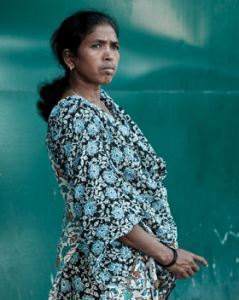 After reading this article, I cried for several hours. My heart was filled with terror. Just reading about such a harrowing experience on another woman/ human being feels so terrifying that it is a matter of concern as to how Soni Sori is living through this ghastly encounter. I wonder where she gathers the strength and the spirit to keep fighting? I am very ashamed that such incidents happen in India even today. Where is the Government of India when its citizens need it the most? How is it allowing the pathetic Chhattisgarh police to get away with something so abominable? Where are the People of India when it is time to speak up? Where is the mainstream media that covers some ridiculous gossip news on bollywood stars but fails to write a single line on this story? Original Article: http://www.tehelka.com/story_main50.asp?filename=Ne151011coverstory.asp 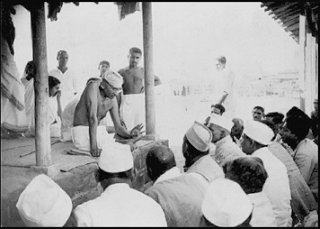 “Independence begins at the bottom… A society must be built in which every village has to be self sustained and capable of managing its own affairs… It will be trained and prepared to perish in the attempt to defend itself against any onslaught from without… This does not exclude dependence on and willing help from neighbours or from the world. It will be a free and voluntary play of mutual forces… In this structure composed of innumerable villages, there will be ever widening, never ascending circles. Growth will not be a pyramid with the apex sustained by the bottom. But it will be an oceanic circle whose center will be the individual. Therefore the outermost circumference will not wield power to crush the inner circle but will give strength to all within and derive its own strength from it.” – Mahatma Gandhi 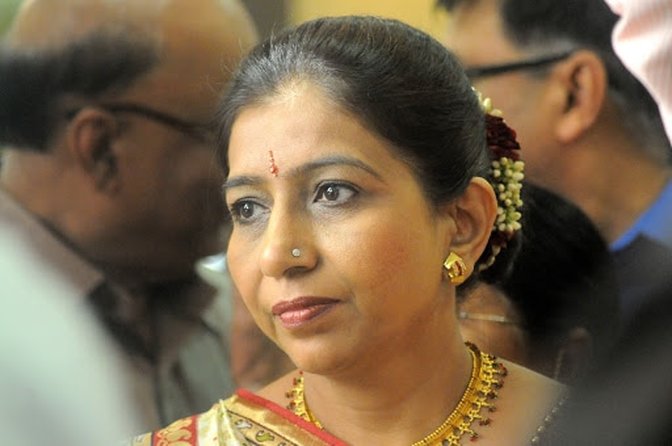 My mother handed me a short poem in Gujarati language when I was getting ready to leave my home after my wedding. While times have changed and such feelings don't ring true as a result of weddings anymore (they did during her youth)... I am very well aware that she has felt this way ever since I moved out of our home to come to the USA to pursue higher education and better life. She always used to say that it was a way of life for the baby birds to grow into adults and eventually fly out of the nest. Every time I read these beautiful lines, they leave me with a knot in my throat. She is a strong woman and I love her infinitely. I have tried to translate it in English here: Finally the end of sleepless nights has arrived, Eventually the wedding ceremonies have come to an end, Now this mother is back to the daily routine, She is counting all the household items one by one, And arranging them all with care, Plates, bowls, glasses, utensils, Nothing has been lost, Everything is in place, But, All of a sudden she remembers something and, She stops in the middle of the hallway, Her eyes are now filled with tears, As a bitter question comes to her mind: Where is my daughter? Original Poetry in Gujarati: આખરે ઉજાગરાનો અંત આવ્યો લગન ઊકલી ગયા માં હવે ઘરની ચીજવસ્તુઓ ગણે છે સંભારી સંભારી મેળવે છે સંભારી સંભારી ગોઠવે છે થાળી, વાટકા, ડીશ, ગ્લાસ, બધું બરાબર છે ક્યાંક કશું ખોવાયું નથી કશુંય ગયું નથી પણ અચાનક કાઈક યાદ આવતા ઈ ઓરડા વચ્ચે ઉભી રહી જાય છે આંખો માંથી ટપકું ટપકું થાય છે ખરો ખરો પ્રશ્ન: મારી દિકરી ક્યાં?  A gentle reminder of our insignificance. “to really put us Earthlings in our place in the Grand Scheme, please have a look at another famous image, the Pale Blue Dot – a photograph taken of the Earth (the tiny pale speck, top center) by Voyager 1 in 1990 from 4 billion miles away (about 6 light-hours). Words of astronomer Carl Sagan about this Pale Blue Dot: “That’s here. That’s home. That’s us. On it everyone you love, everyone you know, everyone you ever heard of, every human being who ever was, lived out their lives. The aggregate of our joy and suffering, thousands of confident religions, ideologies, and economic doctrines, every hunter and forager, every hero and coward, every creator and destroyer of civilization, every king and peasant, every young couple in love, every mother and father, hopeful child, inventor and explorer, every teacher of morals, every corrupt politician, every “superstar”, every “supreme leader”, every saint and sinner in the history of our species lived there – on a mote of dust suspended in a sunbeam.” The story of the uncle-
One fine Saturday afternoon, my parents and I were enjoying lunch at Amul India Restaurant in Columbus, Ohio. We were the only people there at 4 PM. We were all looking at the fish tank close to the entrance. There were 3 fishes in there. 2 of them were tiny and playful while the 3rd one was bigger, fatter, had a wicked look and it simply stared at us; it looked ready to bite any moment. The owner walked towards us for making a conversation. Since we all are Indians, we managed to find a connection. We talked about India. Then he informed us that most of his friends happened to be from Gujarat which is my home-state. He shared that used to visit my hometown Amdavad to sell potatoes with his father, an occupation that helped feed his family. He revealed that this is why he understood my mother tongue language – Gujarati – very well. Who would have thought that a staunch Punjabi uncle like him would know Gujarati! It was such a strange and pleasant co-incidence! The story of the fishes- Anyway…then he went on to tell us the story of the 3 fishes in his fish tank that we were looking at. It was quite difficult to own fishes, he declared. The scary looking slightly bigger fish had managed to eat or kill all the other smaller fishes he had brought to this tank. But it never even touched those two little ones. Those two smaller fishes were brought to his tank together with bigger one. They were new borns then and had grown up together in his tank. They must have built some kind of kinship…that we humans wouldn’t understand, he added quietly. The story of the monkey- This reminded me of a story that my mother had told me once. Once upon a time, a monkey and a man had climbed up a tree trying to escape from a hungry lion. But lion was relentless and sat at the base waiting for one of them to fall or come down. After several hours, when it got dark, monkey and man got tired. But what if they fell down? So, they decided to take turns to sleep while the other watched out for the lion. Man slept first and monkey was on watch. The shrewd lion tried to cut a deal that if monkey pushed the man down, monkey could have its freedom. Monkey got angry and said that he would never deceive his friend. A few hours later, it was monkey’s turn to sleep and for the man to be on watch. The lion tried the same deal with man. Man saw the opportunity in this idea. He impulsively pushed the monkey but the smart monkey had tied its tail to the branch so it wouldn’t fall. Monkey said to the man…I knew I could never trust a human Just like most other Saturdays, I drove to Dosa Corner – an unconventional small South Indian restaurant in Columbus. It was one of my favorite places and it was my ritual to go there once a week. Although it is not supposed to be a hang-out place, I made it one for myself. Owner uncle, who usually wore an austere expression, had became friends with me over the last few years. We used to talk about his family, his roots, his business, etc. He had a typical Indian who-cares-if-not-mine attitude.
Anyways, so this one evening as I walked into the tiny restaurant I noticed that the car parked in front of the restaurant had its headlights on and it seemed to be unintentional. I also noticed that the place was unusually jam packed busy, which made it difficult to assume whose car it might be. So I walked up to the owner uncle, greeted him, placed my order and informed him that someone had left their car headlights on expecting him to inform his customers so their car battery won’t drain out. To my surprise, he carelessly waved off my comment by saying he was not going to announce-shonnounce to anyone. They should learn to take care of their cars and their headlights themselves, he said. On and on he kept going, saying mean things. I was surprised at his irritability but then decided he was probably just having a bad day (or maybe he was just being himself) and focused on the food that had just been served to me. About half hour later as I walked up to the counter to pay the bill, a waiter rushed through the entrance door loudly declaring that uncle had left his car’s headlights on. Yes, the same car that I had warned uncle about. Owner-uncle instantly shot a glance at me as to examine whether I had heard the guy. Generally we share a small conversation before I leave, but this time he avoided me for the rest of the time I was around. And to save him anymore embarrassment, I left quietly. The point was made and it was just too funny to be true! I am a huge Rafa fan. The first time I saw him play was in the 2009 Australian Open. Thereafter, this book sealed the deal for me. I haven't updated my review since I wrote it in 2012 as I wanted to maintain the purity of my feelings from back then. 💙 💚 However, memories came rushing when Roger Federer won his 18th Grand Slam title last night at the Australian Open against Rafa Nadal in the finals. Rafa’s book is an account of a human turned into a super-hero (joking ofcourse). It is, however, a story of how Rafa Nadal came to being a prodigious athlete. It reveals the enormity of mental, physical and emotional strength needed to have 9 Grand Slam victories at the age of 24 in what has been called the Golden age for Tennis. He is already acclaimed as one of the greatest tennis players of all times. (Update: As of 8 June 2014, he has now won 14 Grand Slam Titles with the 9th French Open title in his bag, matching the record of Pete Sampras.)
I felt that every lesson from Rafa’s tennis life could be applied to my non-tennis life; infact the extent to which he keeps trying, makes me feel ashamed and very self conscious of how less I try for anything! Rafa is reaping the fruits of his sacrifices and perseverance since his childhood. It is no wonder that he plays on the court as if he were out in a war. He appears almost as if he is in trance, he is no longer himself. He does not care who is on the other side of the net, he is relentless. He has only one goal, to play his best game and not to lose a single point. With this fire in his belly, he shouts at himself in the mirror VAMOS VAMOS VAMOS in his dressing room before the game begins. He contrasts this (in the book) with Federer who is there with him in that same dressing room, lying on the bench in a meditative mode in accordance with his permanent calm demeanor. He describes how his life is not perfect and hunky-dory as it may appear at the surface. Rafa is aware that he is not naturally gifted or a beautiful player like Roger Federer is. He faces every day challenges & dilemmas as any of us do of depression, sadness, boredom, exhaustion. But his determination only makes him emerge out to be stronger than before. His parents separation left him devastated. He carries his own bag of weaknesses, a gentle reminder that he is after all a human only. He has suffered several career-threatening injuries that could have easily allowed him to slide on tennis rankings with the world’s sympathy on his side. Instead, time and again, he valiantly emerged out of the situation and continued to play to win. His doggedness to give his heart and soul into each point has been ingrained in his genes thanks to Uncle Toni who never tolerated a single excuse for not playing well. This included feeling sick, bad weather, old tennis balls, broken racquets. Just when one thought that Rafa had tried hard enough, Uncle Toni would push even harder and very commonly Rafa would return home crying after practice. However it is for the same reason that family members often had an altercation with Uncle Toni. Even Rafa is often found saying…Uncle Toni is Uncle Toni after all. This reinforces something that I personally apply in my own life – to take criticism with an open mind and low ego in order to keep improving. Uncle Toni is the pillar behind Nadal’s conquests. Nadal’s exceptionally tightly knit family more than made up for the hardships he has faced through their immense love, affection and presence. Nadal’s father presented an unswervingly calm demeanor at all times, especially during his injuries willing to find alternatives that would make him happier. His mother gave him a normal home to come back to. In this glitzy world of celebrities, Rafa received no distinctive treatment or celebrations at home for his victories. They have repeatedly taught him that to be a good person is more important than to be a winner. Saints have spoken about living in the present, and Rafa lives it so. He is almost spiritual in nature without thinking about it so. I did a recount of all my life’s regrets and realized how much I am left behind crying over those rather than moving on. If you compare every point he plays to every incident in my life (since every point he plays has as much story and pouring of everything he has in himself as I did in these incidents of my life), I now recognize that I did not do as much as I could have if I really badly wanted something. An example that will stay with me for the rest of my life is that the night when he won US Open 2010 championship, he slept for only 3-4 hours, the same suite followed the 2nd night and he still went to practice on the 3rd morning with Uncle Toni as per their regular schedule as if it was just another day. There were no celebrations at home and, no paparazzi, no fans, and no excuses not to practice. This story of Rafa’s life is told in between the running account of some of the well-known matches starting with the Finals of Wimbledon 2008 that Rafa won against then world number 1 Roger Federer and ending with the Finals at the US Open 2010 against the unstoppable Novak Djokovic. Inspite of having seen many of these matches, reading about them from Nadal’s perspective was a thrill and pure joy. |
Categories
All
Archives |
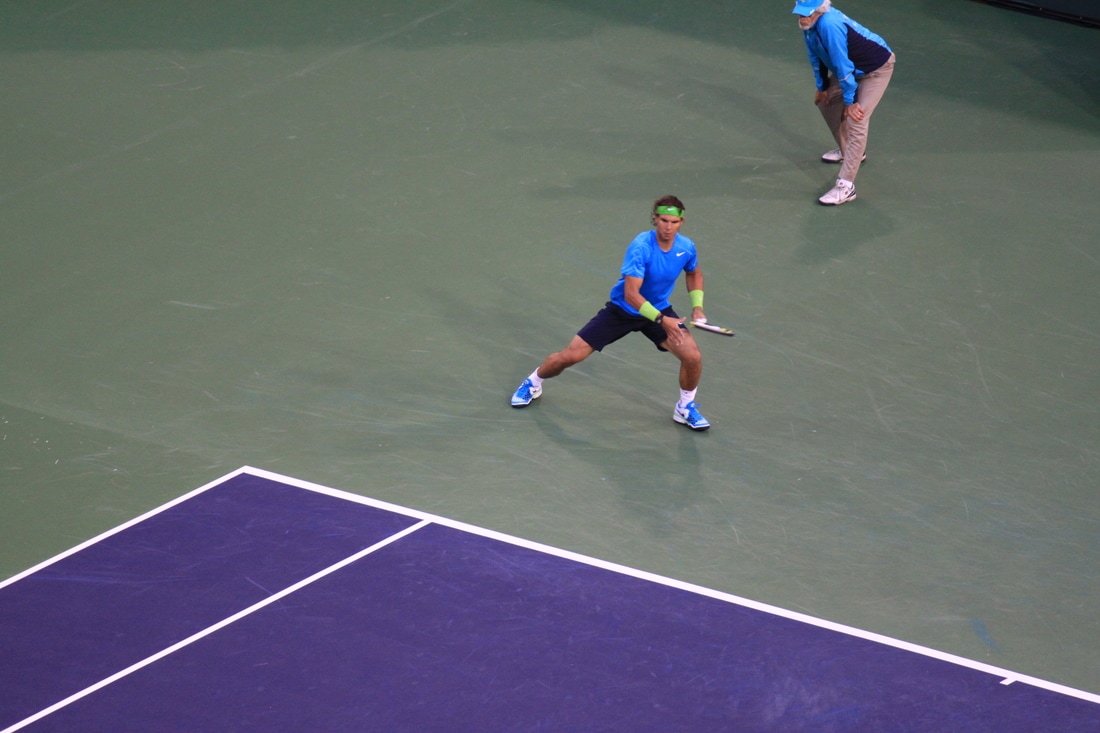
 RSS Feed
RSS Feed
